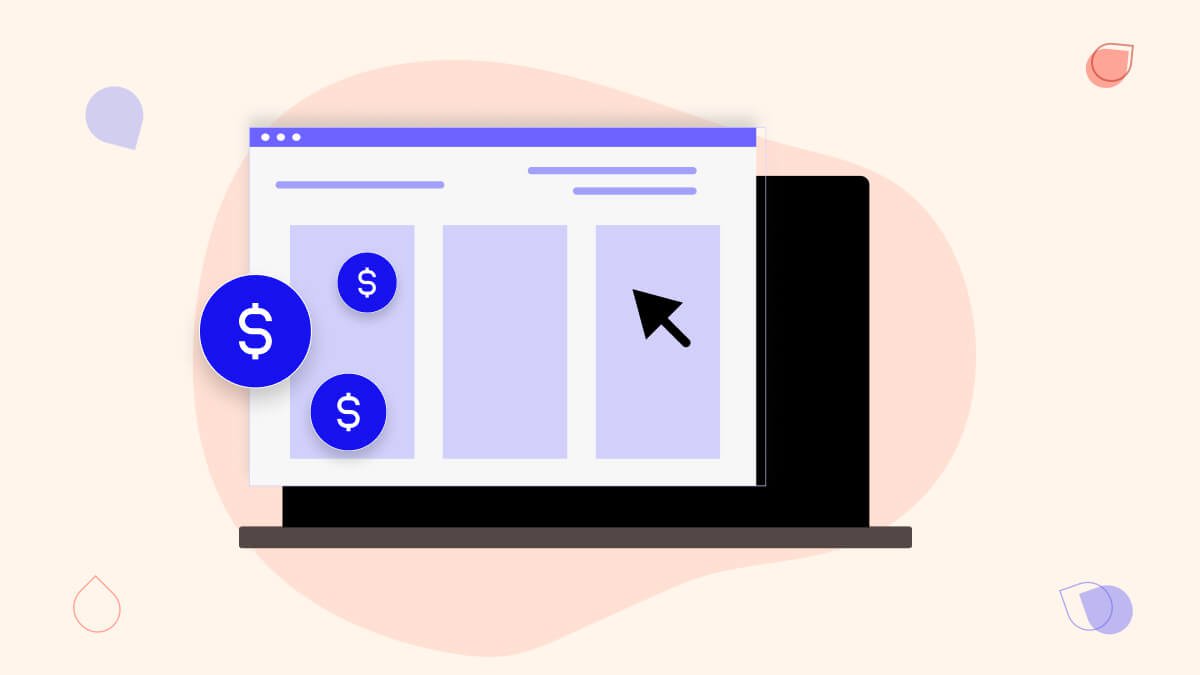What is Facebook Ads Cost and How to Spend Less in 2024
Are you doing everything you can to optimize your Facebook Ads cost? Here are the best ways to improve you ROI including audience targeting, bidding, and more.
Updated April 3, 2024.

"Senator, we run ads."
In 2018, Mark Zuckerberg faced what many presumed would be the demise of Facebook: standing in front of the U.S. Congress, in the wake of the Cambridge Analytica scandal.
Much has changed since then, but that moment marked the beginning of a new era in social media advertising. Years later, Facebook is still here and the platform’s advertising costs are through the roof.
In 2021 alone, Facebook registered more than $114 billion in ads revenue, showing the interest in advertising is growing (just one year before, they had $84 billion).
Despite all the scandals, Facebook Ads remains one of the most lucrative platforms to use when you want to monetize your digital marketing funnel.
How much does it actually cost to run ads on Facebook - and how can you spend less in 2024?
Here's what you need to know.
How does the Facebook ad auction work?
Facebook Ads is a pay-per-click (PPC) advertising platform. The ads you see on Facebook are the result of a bidding process, known as an “ad auction”, which takes place when someone places a bid for a specific target audience.
In this ad auction, advertisers compete to have their ads displayed by offering bids based on how much they're willing to spend on a campaign or acquire a customer. The bids are then weighed against other factors, such as the audience the ad is targeting and the quality of the ad itself.
The higher an advertiser's bid, the more likely their ad is to show up on their target audience's news feed or sidebar. It's also possible for an advertiser to get a lower cost-per-click (CPC) if their ad has higher quality and relevance. This is because Facebook rewards advertisers who create ads that provide a good user experience.
Facebook Ads also offers options for optimizing campaigns, such as automatic bidding - where they automatically raise or lower bids to get better results and maximize campaign performance by focusing on ad sets that are doing well. This kind of Facebook automation ensures that advertisers get the most out of their campaigns and reach their desired audience.
By understanding how Facebook Ads work advertisers can create effective ad campaigns and maximize the impact they have on their target customers. With its powerful auction system, the platform provides a great way to reach potential customers and increase conversions.
Pro tip: want to improve your ad costs? Set up your advertising campaign structure correctly.
How much do Facebook Ads cost?
Facebook bills advertisers based on different metrics. The most common ones are cost per click (CPC), cost per mile (CPM), and cost per lead (CPL). CPC is the cost for every click your ad receives, CPM is the cost per thousand impressions your ad receives, and CPL is the cost for every lead generated through Facebook Ads.
Generally speaking, campaigns with larger advertising budgets tend to be more effective since they have access to a wider range of features and options that can help them optimize their campaigns and get more traction.
Average CPC for Facebook Ads
The average CPC on Facebook is around $1. Of course, a variety of factors influence this number. All in all, though, you should expect to pay about $0.94 for every click or $12.07-$14 for 1,000 impressions you get on your Facebook Ads.
Here's how this translates in business terms:
If you're selling a product that costs $50 and your conversion rate is 2.5 - 3% (average for eCommerce, for example), you'll need to generate 33 - 40 clicks to get one sale.
At an average CPC of $1, that would require a budget of at least $33 - which means that the remainder of $17 will be your profit.
However, if your product is less than $33, you might have to adjust your advertising strategy to bring the CPC to under $1. You can do this through a combination of different tactics, such as retargeting or A/B testing (see more about this below).
Average CPM for Facebook Ads
If you'd much rather pay by the number of impressions, learn that the average CPM for Facebook Ads is around $14. Same as in the case of CPC, CPM is sensitive to a variety of factors (which we'll discuss in greater detail below.)
What this means is that if you're running a branding campaign, intending to reach 500,000 people, then at an average CPM of $14, you'll need a budget of $7,000.
Average cost per lead
According to Revealbot, the average Cost per Lead (CPL) in Facebook Ads is around $5. However, it is worth keeping in mind that not all leads convert - so you should take into account your average conversion rate (once potential buyers are officially marked as leads.)
The type of lead you’re aiming to generate will influence the cost per lead. For example, a free trial or a demo request will cost more than a newsletter subscription. Also, your industry and available target options will also influence your CPL.
What determines your Facebook ad cost?
The cost of ads on Facebook depends on a lot of factors. Some of the most important ones include:
Ad budget
Facebook allows you to set a fixed ad budget, which will determine whether you reach more people or not. The more money you spend, the larger your potential audience is going to be. However, when you are just starting out, you might want to test a small budget (and then scale accordingly).
Ad bid
Your bidding strategy will also influence how much your Facebook Ads cost. There are three main bidding strategies in Facebook Ads:
- Goal-based (pay per-result goal or pay by ROAS)
- Spend-based (based on the highest volume or the highest value)
- Manual (where you put a manual cap on each bid, rather than allow Facebook to automatically cap your bids which is called automatic bidding.)
Goal-based and spend-based bidding are automated by Facebook's system, whereas a manual bid strategy is something you can do yourself.
To make sure you choose the right type of ad bid, you should first make sure you have a solid marketing strategy and understand how the Facebook Ads algorithm works. Essentially, the system will rate each bidder and ad according to three main criteria:
- Bid: how much do you want to pay for each user interaction with your ads
- Estimated auction rates: how likely it is that users will interact with your ads
- Ad quality and relevance: how closely your ad aligns with user interests, how well it resonates with them, and what is the perceived quality of the ad
If your ad comes out with a high score from this three-tiered assessment, you win the bid. Theoretically, an aggressive bid strategy will help you win - but it might also drive your cost per conversion up.
Ideally, you want to strike the right balance between all these key factors and find the sweet spot. And that’s where you should use the expertise of a Facebook Ads expert to help you optimize your bids.
Ad objective
The cost of your Facebook Ads will depend on the marketing objective you've set for your campaign: brand awareness, reach, traffic, app installs, link clicks, video views, etc. If you choose the wrong ad objective, you might end up spending more because the automated bidding process will match your goals.
Audience
When you bid on ad placement, you're competing with businesses in your industry and businesses in other industries that target the same audience as you. So if you target an audience many others are targeting, the cost of your ads will go up. Who your audience is and your audience size will influence your ad spending.
Use custom audiences for every part of your marketing funnel, and constantly feed them with your business data (via social media and email platforms).
Ad quality
Every Facebook ad with more than 500 impressions receives a relevance score, which is an indicator of how your audience reacts to your ad. The higher the relevance score, the more affordable your ads will be.
To make sure your ads have a high relevance score, you need to create content that resonates with your audience, use the right images, and include a clear call to action.
Ad placement
If your ad placement is competitive, you will pay more for your ads. Think of it like real estate: houses in very good neighborhoods are more expensive than those in less popular neighborhoods. Likewise, ad placements on Facebook that have more visibility (like the News Feed) will be pricier than those in less visible areas.
Facebook allows you different ad placements such as on Instagram and the Audience Network to maximize your reach and get more customers.
Industry
Your industry also influences your campaign costs. Industries like finance, legal services, B2B, customer service, and insurance are usually more competitive than others, meaning that their CPC tends to be higher.
Season
If everyone rushes to go on beach vacations in July in a given area, the accommodation and flight prices will go up. The same is true for ads: when a lot of people are advertising in the same industry in a specific season, the cost of the ads will skyrocket. For instance, you might end up spending more on the same ad if you publish it around Black Friday than you would on a random day in June.
Time of day
Ads tend to be more expensive during peak times when people are most active on Facebook. Generally, the cheapest times of day to target are during nighttime and the best period of time to schedule ads on Facebook is from Wednesday to Friday, from 8 to 9 am (when most people start their work day).
Location
Your location might also influence how much you spend on your ads. If a lot of people bid on local ad space, the cost of those ads goes up.
9 ways to reduce your Facebook ad cost
Facebook Ads only make sense if they yield a reasonable cost per acquisition (CPA). Otherwise, you’re just wasting your marketing budget on a channel that’s not sustainable. Here are 9 tips to reduce your Facebook ad cost:
1. Choose the right campaign objective
If you choose the wrong campaign objective, you will spend more and get less. Here's an example: if you're advertising beauty products for women, and want to set up a bottom-of-the-funnel campaign, choosing the reach objective isn't the best choice because it will not necessarily drive sales.
Instead, choose more targeted objectives like conversions. This way, the automated Facebook bidding system will know how to use your advertising budget to get better results.
2. Narrow down your audience
The larger your audience is, the more businesses you're competing with. Narrowing down your audience is a great way to decrease your Cost per Click (CPC).
To do this, you need to get as detailed as possible in the Audience Insights section of the Ads Manager. For example, if you sell beauty products for women, you could target specific ads to specific groups of women (age, interests, type of skin as shown by previous browsing history, etc.). This is more efficient than, say, targeting all women in a country.
A tool like Klaviyo can help you build smart marketing campaigns around this. Because it connects to Facebook audiences and your website, Klaviyo can help you target your campaigns and take your leads past the Facebook ad click and into making a purchase.
3. Lower your ad frequency score
The more your ads appear in the same format on the platform the less likely your users are going to engage with them. This is called ad fatigue and it’s the reason you should decrease your ad frequency score.
If you see a low action rate on your ads it might mean it’s time to change up your ad creatives or messaging. So refresh your ads every few days or weeks, and test out different designs and ad placements. This will also help you avoid ad fatigue and keep your CTR high.
4. A/B test ad creatives and placements
A/B testing (or multivariate testing) is key to running any kind of successful marketing or advertising campaign. Many times, you don't know what works and A/B testing allows you to compare different versions of your ads to optimize them.
Make sure you only change one variable in your A/B testing variants. Otherwise, you won’t know which variable affected the outcome.
For example, you can either change the ad copy, the creative, or the placement (desktop vs. mobile), but not all of them at once. You could also test different bids and budgets. This way you'll get a comprehensive overview of what works (and what doesn't).
5. Make your ads relevant
There's no point in running ads that aren't relevant to your target audience. Not only will this hurt your CTR, but it will also waste a lot of money in the ad bidding process (because your relevance score will be lower). Keep your ads relevant both in terms of content and in terms of targeting.
6. Run retargeting campaigns
Retargeting campaigns are an effective way to re-engage users who have already interacted with your business in some way. This could be anything from visiting your website to liking your Facebook page to filling out an online form.
Retargeting campaigns allow you to target those people who already know and trust your business. As a result, it will get you better conversions at lower costs than what you’ll get with cold traffic.
7. Improve the post-click experience
The post-click experience is just as important as the pre-click one. If you direct people to a slow or poorly designed website or landing page, they'll almost instantly leave, which means a lower conversion rate and more costly ads. So you need to optimize the entire marketing funnel and make sure your user has a good experience from click to purchase, and beyond.
8. Hire a Facebook Ads agency
Running ads on Facebook can feel overwhelming. There are many elements to consider and sometimes the cost of your ads on Facebook can be discouraging. Hire an expert Facebook Ads agency to save on ad costs and make sure your campaigns are successful.
Experienced advertising pros and Instagram Ads managers know how to effectively optimize campaigns and get the most out of your budget. They also have decades of experience behind them, so they know how to test different elements to maximize results for the lowest cost possible.
9. Use lookalike audiences
Facebook lookalike audiences allow you to tap into audiences similar to those who already made a purchase from you. How this works is that Facebook takes a small group of your users (e.g., people who have already purchased your product) and then finds similar audiences that fit those same parameters.
Lookalike audiences are great for increasing reach and building brand awareness. They also help you find high-quality leads at a lower price with minimum optimization effort.
Recap
Facebook Ads is one of the highest ROI marketing channels out there. However, whether Facebook Ads is worth it or not depends on a variety of factors - including your business model, bidding strategy, average click-through rates, engagement rates, and other metrics.
Advertising isn't a magic wand. You can't just put money in it and expect a mind-blowing ROI overnight. While it’s generally a quicker way to acquire new customers (compared to organic channels), make sure you set the right expectations for your advertising efforts.
Facebook Ads is no exception: if you want them to get you a good ROI, you need to pursue ad optimization: to constantly tinker, adjust, and re-strategize. Need a hand? Talk to one of our expert Facebook marketers.
FAQs
How much does Facebook advertising cost in 2022?
In 2022, the cost of advertising on Facebook was $0.94 if you use a CPC (Cost per Click) metric and $12.07 if you use a CPM (Cost per Mile) one. If you want to attract likes on your Facebook page, the average cost will be $1.07 per like. And if you want to attract downloads, you can expect to pay $5.47 per download. Of course, these are just average values, and the actual cost of your Facebook Ads will depend on various factors such as targeting, relevance, budget, competition, and more.
How much does a Facebook ad cost per day?
Facebook allows you to set your own daily ad spend (daily budget or lifetime budget). However, the algorithm will distribute your budget throughout the day based on the parameters you set in your campaign.
For example, if your goal is brand awareness and you spend $1/ day and your average CPM is $9.07, that means your monthly budget for Facebook Ads will be $39 (or $360 per year) to get around 3,0000 monthly impressions (or 37,000 impressions/ year) on your ads. That's your business, exposed to 37,000 new people who match your target audience.
What’s the minimum budget for Facebook ads?
The minimum daily budget for Facebook ads is $1/ day for ad sets that aim for impressions (with CPM as the main metric) and $5/ day for ads that have different goals (such as clicks, likes, video views, and so on.)
Generally, a larger budget will allow you to tap into a larger audience, get more clicks, or attract more downloads. However, your budget & schedule will always influence what your minimum efficient budget for Facebook ads is.
Is $1 a day enough for Facebook ads?
Theoretically, yes, $1 is enough for Facebook ads, particularly if you're aiming for impressions. However, it all depends on the goal of your ads campaigns, the relevance of your ads, and the target audience you have chosen.
It's also important to keep in mind that going for a low budget might mean sacrificing reach, so it might not be enough to get the results you're looking for.
Why are Facebook ads so expensive?
Facebook ads are actually less expensive than many other forms of advertising, such as TV and radio. The cost of your campaigns depends on various major factors like targeting, budget, relevance, competition, and more.
The more competitive your space is (large audience, tough industry, seasonal upticks in bidding, etc.), the more you will pay for your ad campaign. However, a good Facebook Ads expert can help you minimize costs and maximize results.
How much should you spend per day on Facebook ads?
There's no right or wrong answer to how much you should spend per day on Facebook ads. Your Facebook ads cost will depend on your entire ad budget, goal, ad bid, ad quality, and how competitive your space is.
Start small, test out, and scale up your budget as you start to see results. Generally, though, you will need to spend $2-$5/ day to see statistically significant results. Doing this will help you use your marketing budget at max efficiency and help you get the type of ROI you’re looking for.
How much does Facebook advertising cost for impressions?
The average Cost per Mile (CPM) for Facebook Ads is around $14 in 2022. This means that for $14, your ad will be shown to 1,000 potential customers (targeted according to your campaign settings).
How much does Facebook advertising cost for likes?
The average Cost per Like in Facebook Ads is around $1 per like. Keep in mind that you might spend less than that (or more), depending on your targeting, ad quality, relevance, and more.
![[Interview] Destaney Wishon on Amazon Ads for eCommerce](https://entail.mayple.com/en-assets/mayple/fit-in/280x280/61cd796bbc6b5b23c5fa02a8_destaneywishonmaypleinterview2_e2e42348549fd4d0a24847b7a248d4a9_2000-1699776099357.jpg)



